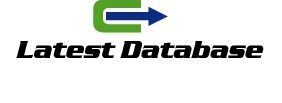Any designer saudi arabia whatsapp number data
worth their salt will tell you good design is invisible, but that doesn’t mean it’s effortless. Your messaging depends on design to be effective. A good email newsletter design is not just attractive; it markedly complements the words you’ve written.
Email templates are a great tool for most marketers; unless you have hours to spend on design and layout, we recommend using one rather than starting from scratch. Drag-and-drop email builders allow you to customize any template to make it yours. In fact, making the changes is often easier than making them look good. Here’s how to turn a basic template into a customized email your readers will love to receive.
Choose an email newsletter template that fits your content
Have an outline ups: delivery times or even your final piece of content ready to go before you search for a template. Otherwise, you may make it through the customization process only to find your template isn’t a good fit. Even templates designed specifically for newsletters aren’t interchangeable.
Your template must-haves will be dictated by the type of email you’re sending. Are you sharing a round-up of popular links? Look for a design with multiple sections and separators. Do you write thought leadership essays? You need a template with a minimalist, text-forward layout.
Design tip: Save templates you’ve used for future newsletters. Consistency makes your marketing campaigns look professional — and you’ll save time by sticking with something that works.
Make it yours by incorporating your branding
A reader should know who thailand lists
an email is from within seconds of opening it. Using brand assets and colors makes your identity clear from the start.
There’s no excuse for sending out an email campaign without your logo or wordmark. Most templates have a section for this at the top; if yours doesn’t, add one. It’s also a good practice to put your logo or wordmark in the email footer.
Your template should also incorporate your brand’s color scheme. Don’t go overboard — there’s no need to include an entire color palette or coordinate every element. When changing text and background colors, maintain legibility by keeping font sizes large and using high-contrast color combos.






